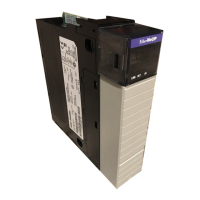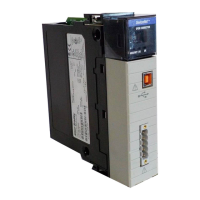Behavior models used in CIP Motion
42 Rockwell Automation Publication MOTION-RM003I-EN-P - February 2018
Exception Actions
For each exception, the motion axis can be programmed for a variety of actions
using the Exception Action attribute. Exception Actions range from generating a
major fault that results in the stopping of the motion axis all the way to taking no
action at all. The CIP Axis Faults attribute allows the controller to have
immediate access to any exceptions that have been configured to generate a major
or minor fault. The CIP Axis Alarms attribute allows the controller to have
immediate access to any exceptions that have been configured to be reported as
alarms.
Alarms
Alarms are runtime exception conditions for which the device is to take no action
other than to report as an alarm. Alarms and warnings, therefore, are basically
synonymous. On a given device product, some exception conditions may not be
able to simply be reported as an alarm without any associated action; for example
an IPM fault in which the power module automatically shuts off without software
intervention. Alarm conditions are automatically cleared when the underlying
exception condition is no longer present.
Faults
Faults can be initialization faults, configuration faults, safety faults, module faults,
group faults, motion faults, or runtime exception conditions that the axis has been
configured to regard as a fault. Fault conditions can occur in either the controller
or motion device. If a runtime fault occurs during an operational state, for
example, Running or Testing, it will result in the device stopping (or aborting) all
axis motion, either automatically or programmatically. Fault conditions ultimately
transition the axis state to the Faulted state. A Fault that results from an exception
condition is latched, and does not clear when the exception condition clears. A
fault can only be cleared with a Fault Reset. If the fault condition is classified as an
'unrecoverable fault', only a power cycle or a device reset can clear the fault
condition.
Start Inhibit Behavior
A Start Inhibit is a condition that inhibits the axis from starting, i.e. transitioning
to the Starting state for enabled axis operation. This condition does not generate
an exception if a start attempt is made. If the circumstances that led to the Start
Inhibit are no longer present, the start inhibit condition is automatically cleared
by the device, returning the axis to the Stopped State.
If the motion axis is in the Start Inhibit state it indicates that one or more
conditions are present that prevent the axis from transitioning to enabled
operation. The Start Inhibits attribute reports the specific condition that is
inhibiting the axis.

